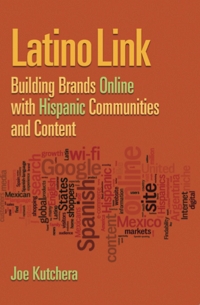This article originally appeared on MediaPost and is an early preview of Latino Link: Building brands online with Hispanic communities and content:
Put yourself in the shoes of a bi-lingual or Spanish-preferring U.S. Hispanic and try searching in Spanish on Google, Yahoo or MSN and what do you find? A good portion of the results, sometimes approaching 50%, come from sites based in Mexico, Spain, and other Spanish-speaking countries.
Let’s look at some examples I found recently on the first page of natural (not paid) results on Google.com:
1) Vuelos a Nueva York (flights to New York): 9 out of 10 were foreign
2) Restaurantes en Los Angeles (restaurants in L.A.): 6 out of 11 were foreign
3) Recetas mexicanas (Mexican recipes): 5 out of 10 were foreign
4) Computadoras baratas (cheap computers): 6 out of 10 were foreign
Globalization of Information and News
However surprising this may be, we need to look no further than Google’s corporate mission statement to see why this is the case: “to organize the world’s information and make it universally accessible and useful.” Google and other search engines index sites globally while we marketers, agencies and media sellers work within the economic and political borders of the U.S.
A search engine robot ranks results in each language by keyword ranking, the quality of the content and the number of sites that link to that site (with a possible preference to sites based within that country’s borders). So, when a Hispanic searches for a niche subject that a Hispanic publisher hasn’t provided in Spanish, where will a U.S. search engine send them? Wherever else in the world that content exists online in Spanish: Mexico, Spain, Argentina, etc.
Why is this happening?
In addition to the globalization of media, this highlights a number of trends in consumer behavior and lessons for U.S. Hispanics marketers:
- Spanish-language sites/pages based in the U.S. may not be optimized for search engines as well as sites in other countries where Spanish is the main language.
- Many U.S. Hispanics search in Spanish and may prefer visiting sites from their country of origin, depending upon their level of acculturation.
- Spanish-language markets that invest much more with local, Spanish-language online publishers, like Spain, are more likely to have content online and therefore appear more often in search results.
- U.S. Hispanic advertisers have lagged behind in moving their budgets online and therefore have provided less of an incentive for U.S. Hispanic publishers to post a wide variety of content online.
Nevertheless, even though English reigns supreme as the most utilized language online, Spanish may catch up soon as computer prices continue to fall and publishers bring more content online. New Netbooks today, for example, cost around $150, making it much easier for Hispanics to check email, use the Internet and call their relatives via Skype or MSN.
Solutions: Spanish-Language SEM and SEO
The good news amidst this seismic change in consumer behavior is the opportunity that this presents to marketing professionals who are ready to try new and more sophisticated ways of marketing to U.S. Hispanics online. Here are some questions to ask yourself and your media partners for managing this issue:
1) Are you buying U.S.-only geo-targeted inventory on your search and banner buys? Or are allowing your publishing partners to serve those impressions wherever they have visitors across the globe?
2) Is your Spanish-language site (or pages) optimized for search engines?
3) Are you reaching U.S. Hispanics on country-of-origin web sites through ad networks or exchanges as they land on content pages (once they’ve clicked on search engine results)?
4) Are you applying additional layers of targeting like behavioral, contextual, or language targeting to further segment and understand your Hispanic audience online?
5) How does this consumer behavior with regards to search engines inform the way your brand reaches Spanish-language consumers online both domestically and globally?






